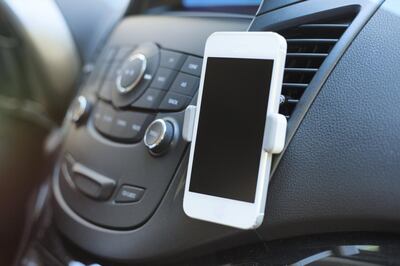Most drivers buy a new car every six years, which is a long time when you consider that roads, cars and safety features seem to be upgraded more often than we change our socks.
Today, however, purchasing a new vehicle is not an easy process, particularly in the UAE, where we have access to models from various markets across the world.
Whereas other regions are restricted to mainly European car manufacturers with small engines or American and Japanese cars built with specific demands in mind, here we are presented with an array of features, accessories, extras and technical innovations we are told by manufacturers are must-haves.
But do we really need them all?
It can be tempting to grab everything, but the cost can quickly add up and you may find that some of the features could hinder rather than benefit you.
So, here we guide you through the key car features we highly recommend you consider, as well as those you could probably do quite happily without.
Must-have safety features:
Automatic emergency braking. This uses various systems that are able to detect all kinds of obstacles, warning the driver of an imminent collision and automatically braking to avoid a crash. At low speeds, such as in heavy traffic on Abu Dhabi highways, this feature can detect slow-moving and stationary vehicles in front and prevent any sort of impact without you touching the brakes. At higher speeds, the impact of the collision will be greatly reduced.
Pedestrian recognition. Much like automatic emergency braking, this system uses a sophisticated combination of sensors (usually radar, laser or a combination of the two) to detect a human being and alert the driver to an imminent collision. If the driver does not respond to the warning, the car's brakes are applied, with full force, less than a second before the calculated impact time.
Blind Spot Warning. This is a simple yet effective feature that uses cameras, radar and/or ultrasonic sensors along the side of the car to detect vehicles that are in your blind spot. When a vehicle is detected, the driver will receive a visual, audible or haptic (vibration through the steering wheel) warning to alert them to the potential danger. Most manufacturers fit a warning light inside the wing mirror or on the interior pillars.
Adaptive cruise control. Cruise control has been a handy feature for many a commuter from one emirate to another and adaptive cruise control takes it one step further. Previous systems allowed the driver to set a cruising speed and remove their foot from the accelerator and brake pedal only to have to place their foot back every time they approached a slower vehicle. With the adaptive element, the car will alter its speed automatically according to the pace of the vehicle in front, slowing to find a safe distance before accelerating to the original set speed when the slower vehicle moves out of your way.
Side or curtain airbags. Fortunately, front air bags are compulsory in most countries. However, side or curtain airbags are still an additional feature for most manufacturers. The curtain airbag activates instantaneously in the event of a side-impact crash, deploying from the top of the door rails above the side window. This is an important safety innovation that helps protect occupants in side-impact crashes, meaning there is more protection for young passengers travelling in the rear of the vehicle.
Features you can probably live without
Built-in navigation. Why use and pay for built-in navigation that requires expensive updates when you can plug in your smartphone with Android Auto or Apple CarPlay? Using Google Maps or Waze through your own device will not only save you money, it will alert you to traffic build-up, stationary vehicles and speed cameras on your route, too.
Rear entertainment units. This forces your children to watch the same cartoon when, instead, you could buy a tablet, book or a game that can be recharged using the USB ports. Avoiding this feature will also prevent arguments about what to watch.
Lane Keep Assist. This may seem like a good idea in theory, but there are two reasons we don't believe this will benefit you, especially in the UAE. To explain, Lane Keep Assist automatically steers the car back into your lane when you cross the white markings and haven't activated the indicator. This should be a good thing, but in cars with this feature, the driver either panics when the system tries to steer the car back into the lane, or the system thinks the driver is veering out of their lane when actually the sensors are picking up one of the white lines from old markings. Most cities don't experience changes in their road structures in the way we do.



